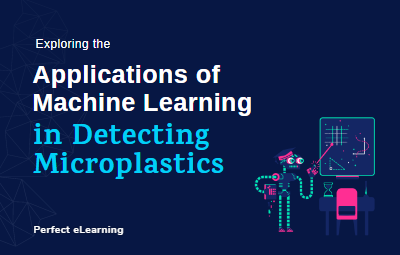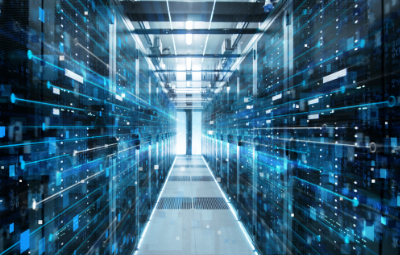

The use of plastic has become ubiquitous in modern society. However, it has come at a significant environmental cost, particularly in terms of plastic pollution. One major issue is the presence of microplastics in our oceans and waterways. Microplastics are small plastic particles that have a size of less than 5mm, and they can be present in various forms, including microbeads, fibres, and fragments. Microplastics pose a significant threat to marine ecosystems and can have a range of negative impacts on marine life.
What are Microplastics?
Microplastics are small plastic particles that can enter the environment through various sources, including plastic debris that has broken down into smaller pieces, fibres from synthetic textiles, and microbeads used in personal care products. Microplastics are pervasive and have been found in every corner of the globe, from the deepest parts of the ocean to the top of Mount Everest.
The Impacts of Microplastic Pollution
Microplastics have been shown to have a range of negative impacts on marine life. They can be ingested by a range of organisms, from small planktonic organisms to large marine mammals. Once ingested, microplastics can cause a range of health problems, including internal injuries, blocked digestive systems, and hormonal imbalances. Microplastics can also act as a vector for toxic chemicals, allowing them to enter the food chain.
Traditional Methods for Microplastic Detection
Traditional methods for microplastic detection involve collecting water or sediment samples and manually counting and categorising microplastics under a microscope. This method is time-consuming, labour-intensive, and subjective. It also has limitations in terms of the types of microplastics that can be detected and the accuracy of the results.
Machine Learning in Microplastic Detection
Machine learning is a subset of artificial intelligence that enables computers to learn from data and make predictions or decisions based on that data. Machine learning has been applied to a range of environmental problems, including the detection of microplastics.
Image Processing Techniques for Microplastic Detection
One of the most promising applications of machine learning in microplastic detection is image processing. Machine learning algorithms can be trained to detect microplastics in images taken of water or sediment samples. This method is more efficient and accurate than traditional methods, and it can detect a wider range of microplastics.
Sensor Technology for Microplastic Detection
Sensor technology is also being used to detect microplastics in water or sediment samples. Sensors can detect the physical properties of microplastics, such as their size and shape, and provide valuable data for environmental monitoring.
The Role of Data Analysis in Microplastic Detection
Data analysis is a critical component of microplastic detection with machine learning. Machine learning algorithms require large amounts of data to learn from, and data analysis can help identify patterns and trends in the data. This information can then be used to train machine learning models to detect microplastics more accurately.
Applications of Machine Learning in Microplastic Detection
Machine learning has a range of applications in microplastic detection, including:
1. Monitoring the distribution and abundance of microplastics in the ocean
2. Identifying the sources of microplastics in the environment
Deep learning is a subset of machine learning that involves the use of artificial neural networks to learn from data. Deep learning has shown promise in microplastic detection, particularly for identifying microplastics in complex or cluttered images.
Challenges and Limitations of Microplastic Detection with Machine Learning
While machine learning has shown promise in microplastic detection, there are also challenges and limitations to consider. Some of these include:
1. The need for large amounts of data to train machine learning models
2. The potential for bias in the data used to train machine learning models
Future Directions and Possibilities
Despite these challenges, the use of machine learning in microplastic detection is likely to continue to grow in the coming years. Some of the future directions and possibilities for machine learning in microplastic detection include:
1. Integrating multiple detection techniques, such as image processing, spectroscopy, and sensor technology, to improve accuracy and efficiency
2. Developing machine learning models that can detect the chemical composition of microplastics to identify their sources and potential impacts
Conclusion
Machine learning is revolutionizing the field of environmental monitoring, including the detection of microplastics in our oceans and waterways. While there are challenges and limitations to consider, the potential benefits of machine learning-based microplastic detection are significant. By improving our ability to detect and monitor microplastics, we can develop more effective strategies for mitigating and reducing plastic pollution in our environment.
FAQs
Q. How do machine learning algorithms detect microplastics?
Machine learning algorithms detect microplastics by analysing large amounts of data and learning to identify patterns and trends in the data. This can involve image processing, spectroscopy, sensor technology, and other techniques.
Q. What are the benefits of using machine learning for microplastic detection?
The benefits of using machine learning for microplastic detection include increased accuracy and efficiency, the ability to detect microplastics in complex or cluttered images, and the potential to develop predictive models of microplastic distribution and abundance in the ocean.
Q. What are the limitations of using machine learning for microplastic detection?
The limitations of using machine learning for microplastic detection include the need for large amounts of data to train machine learning models, the potential for bias in the data used to train the models, and the difficulty in detecting certain types of microplastics.
Perfect eLearning is a tech-enabled education platform that provides IT courses with 100% Internship and Placement support. Perfect eLearning provides both Online classes and Offline classes only in Faridabad.
It provides a wide range of courses in areas such as Artificial Intelligence, Cloud Computing, Data Science, Digital Marketing, Full Stack Web Development, Block Chain, Data Analytics, and Mobile Application Development. Perfect eLearning, with its cutting-edge technology and expert instructors from Adobe, Microsoft, PWC, Google, Amazon, Flipkart, Nestle and Info edge is the perfect place to start your IT education.
Perfect eLearning in Faridabad provides the training and support you need to succeed in today's fast-paced and constantly evolving tech industry, whether you're just starting out or looking to expand your skill set.


